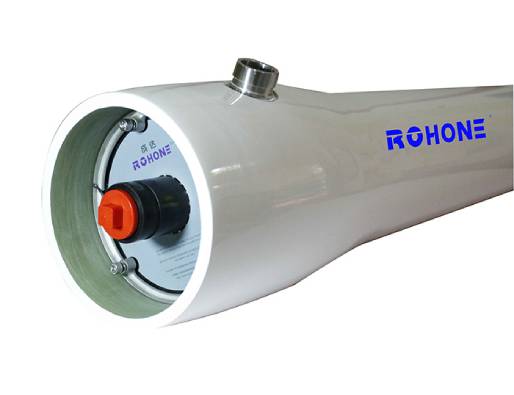In the water treatment industry, the relationship between the thickness of water supply screens of reverse osmosis membrane pressure vessels and the possibility of membrane contamination is often discussed, especially in organic water, colloids and suspended solids with high concentrations in the water supply. In many cases, discussions on this issue often lead to disagreements.
One opinion is that the use of a thicker water supply channel, that is, a membrane element with a water supply screen thickness of 0.031 inches (0.78 mm), compared to the use of a normal, that is, a water element with a 0.028 inch (0.71 mm) film thickness, The membrane is cleaned less frequently, resulting in longer membrane life. However, there is no actual data to support this view.

Reverse Osmosis Membrane Pressure Vessels
Before entering the discussion, we must understand the relevant mechanism of membrane element contamination. Because the water contains insoluble salts, colloids, microorganisms, organic matter, metal oxides and other various particles of impurities, it will cause pollution of membrane elements. Taking colloids as an example, colloids in natural water are mostly negatively charged. This colloid is composed of a positively-charged colloidal core and a negatively-charged outer layer. Due to the multilayer structure and hydration of the colloid, colloidal energy Suspension in water, because the colloidal negatively charged outer layer and other colloidal positively charged colloidal cores attract each other, many colloidal particles with the same charge exist at the same time, but the particles do not actually contact each other.
The FRP pressure vessel supplier believes that because the negatively charged groups used in the manufacturing process of the composite membrane are not fully reacted, the surface of the composite membrane usually has a certain degree of negative electricity. This negative electricity is in the manufacture The process is intentionally controlled to better remove negatively charged substances. When feed water is fed into the membrane element, most of the colloids will follow the water flow through the water supply screen and exit the membrane element. There are two forces that affect the migration speed of these colloids in the membrane element.
The first force causes the colloidal particles to move in a direction parallel to the surface of the membrane; the second force brings the colloidal particles to move vertically to the membrane surface to replace the space left by the permeation of water. The colloidal particles reach the surface of the membrane. The rate is related to water production flux. The higher the water flux (for example, when the membrane area is small in the system), the higher the colloid concentration at the membrane surface. Near the membrane surface, due to the boundary layer effect, the water flow resistance is the largest, so The horizontal flow rate is almost zero, which causes some colloidal particles to stick to each other and adhere to the membrane surface, thereby increasing the thickness of the boundary layer and causing a blocking effect. This is why water production will rapidly decrease when membrane element pollution occurs. Maintaining sufficient lateral flow velocity of the membrane surface in the feedwater, flushing and peeling off the particles such as colloids accumulated on the membrane surface in time, and maintaining a constant boundary layer thickness have a positive effect on maintaining the membrane's water production.